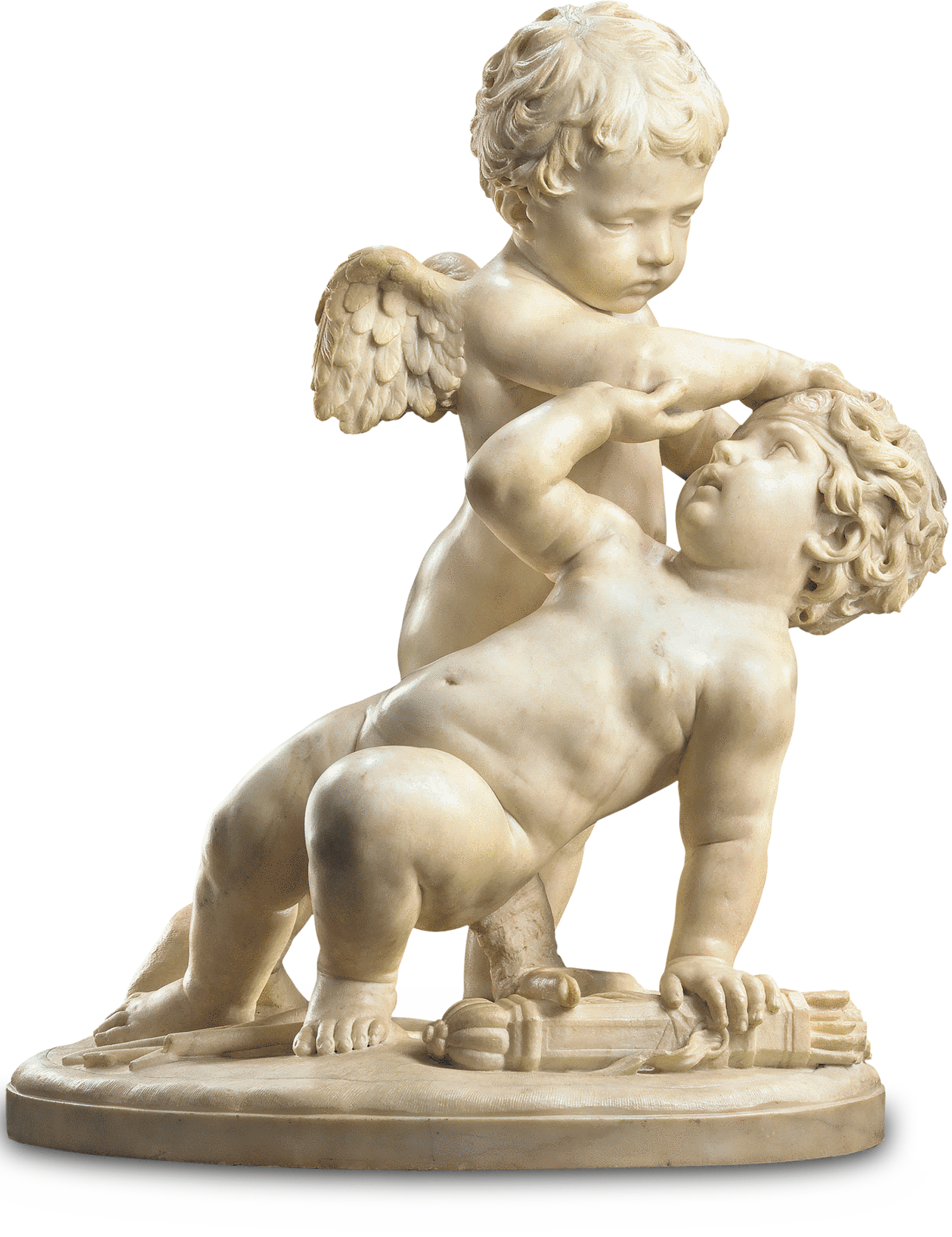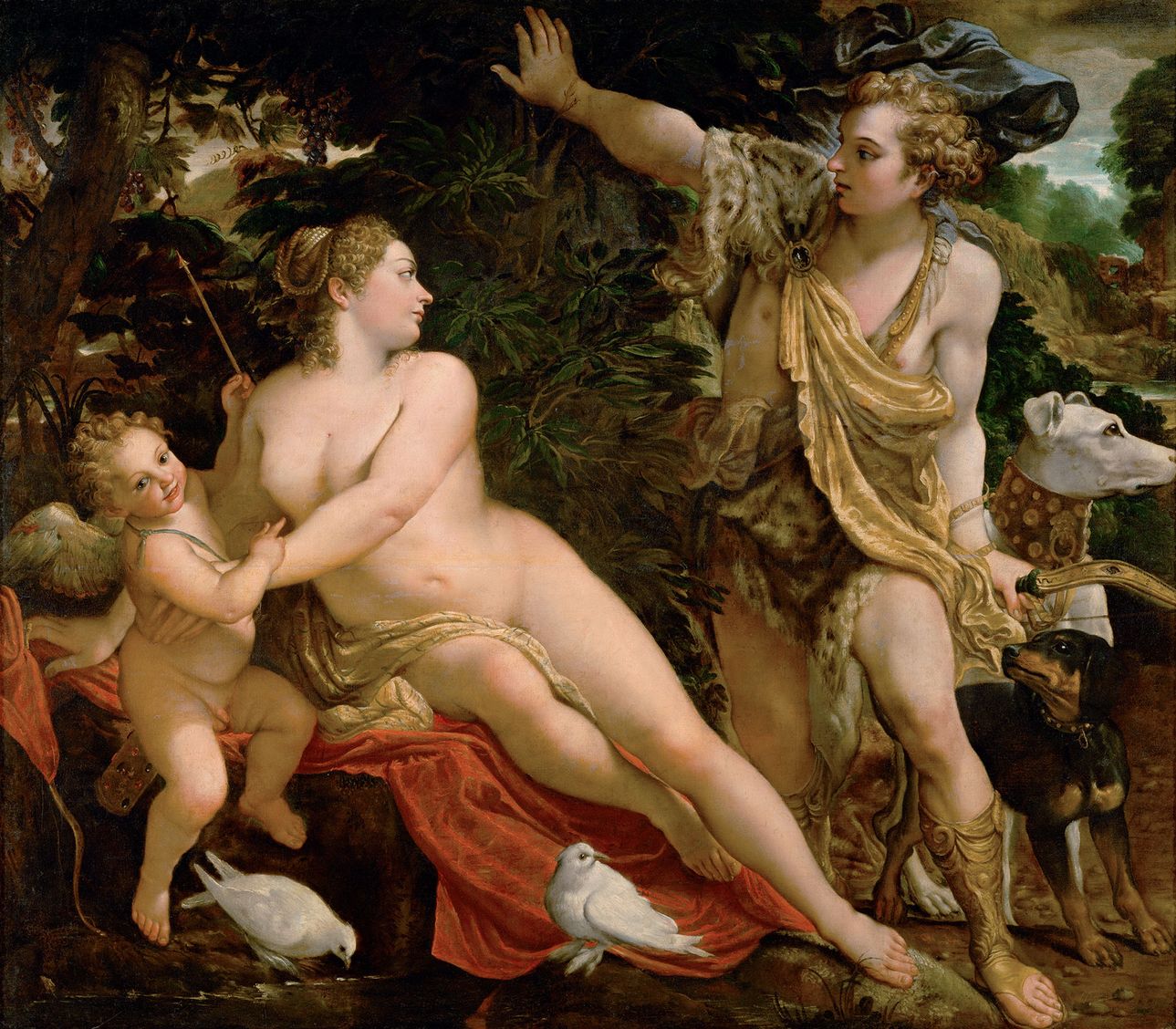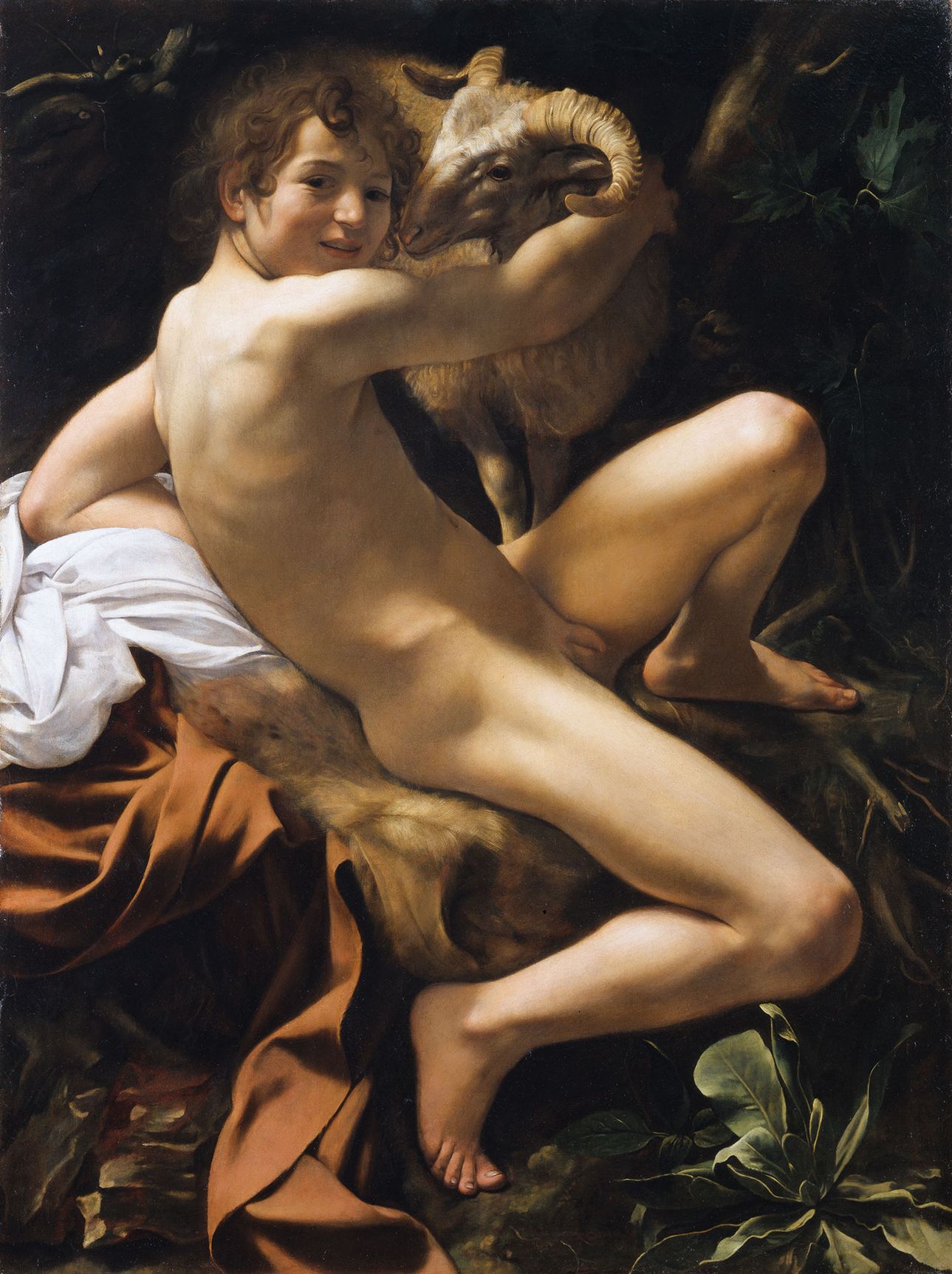Love conquers all. Amor vincit omnia.
After the mediaeval period, there co-existed several notions of what love is. Overall, it was a problem. Although everyone agreed that love struck where beauty was discovered, the church would have preferred more purity and chastity than the people were willing to concede. Sixteenth century scholars therefore came up with a new theory: that of sacred and profane love. Ideally, these two forms of love were to complement each other.

© LIECHTENSTEIN, The Princely Collections, Vaduz – Vienna
Eros, also known as Amor, represents profane love on earth.
The two kinds of love were depicted, among others, in the shape of the two brothers Eros and Anteros. Eros, also known as Amor, represents profane love on earth. We find him in Annibale Carracci‘s Venus und Adonis. He is visibly amused by the fact that his arrow has just pierced his mother, Venus, who in turn immediately falls for Adonis, having spotted him in the thickets. Even Venus, the goddess of love herself, is not safe from Eros‘ game.
Anteros, on the other hand, represents the scared love for truth and the divine.
Allessandro Algardi created from stone a scene that is familiar to all of us: two brothers fighting. At the same time, Algardi tells a greater tale: the competing brothers are Eros and Anteros.
One of them, Eros, has just tumbled. His left arm is leaning on his famous quiver of arrows.
His brother, Anteros, has taken his blindfold, so that even Eros’ eyes are opened at this moment. He could be eye to eye with love rather than, as usual, being blinded by it.
Alessandro Algardi
(Bologna 1598–1654 Rome)
Eros and Anteros
Rome, 1630
Carrara marble, H. 82,5 cm
Vaduz – Vienna, LIECHTENSTEIN.
The Princely Collections, inv. no. SK1481
Annibale Carracci
(Bologna 1560–1609 Rome)
and workshop
Venus and Adonis
17th century
Canvas, 217 × 246 cm
Vienna, Kunsthistorisches Museum,
Inv. no. 234

The morality of heterosexual and homosexual relationships was debated.
Some sixteenth century theories advised young men to act out their sexual passions before they entered marriage. Women paid the price. The pure, chaste woman waiting for matrimony was juxtaposed by the evil beauty. These double standards were only possible with the aid of prostitutes and courtesans. They, in turn, were ostracized by society.

© Sovrintendenza Capitolina ai beni Culturali, Musei Capitolini – Pinacoteca Capitolina, Roma
In around 1600, beautiful young male nudes were particularly popular. It is notable how often androgynous young men were depicted, even to represent saints. The morality of heterosexual and homosexual relationship was debated.
Michelangelo Merisi da Caravaggio
(Milan 1571–1610 Porto Ercole)
St John the Baptist
c. 1602
Canvas, 129 × 95 cm
Rome, Musei Capitolini,
Pinacoteca Capitolina, inv. no. PC 239
Caravaggio and his followers picked up on these topics in their works of art, too. The heated debates of the time live on in their paintings. We encounter ambiguous looks, bodies and faces. They speak to us, the onlookers, directly: we are being invited to make up our own minds on the topic of love.
